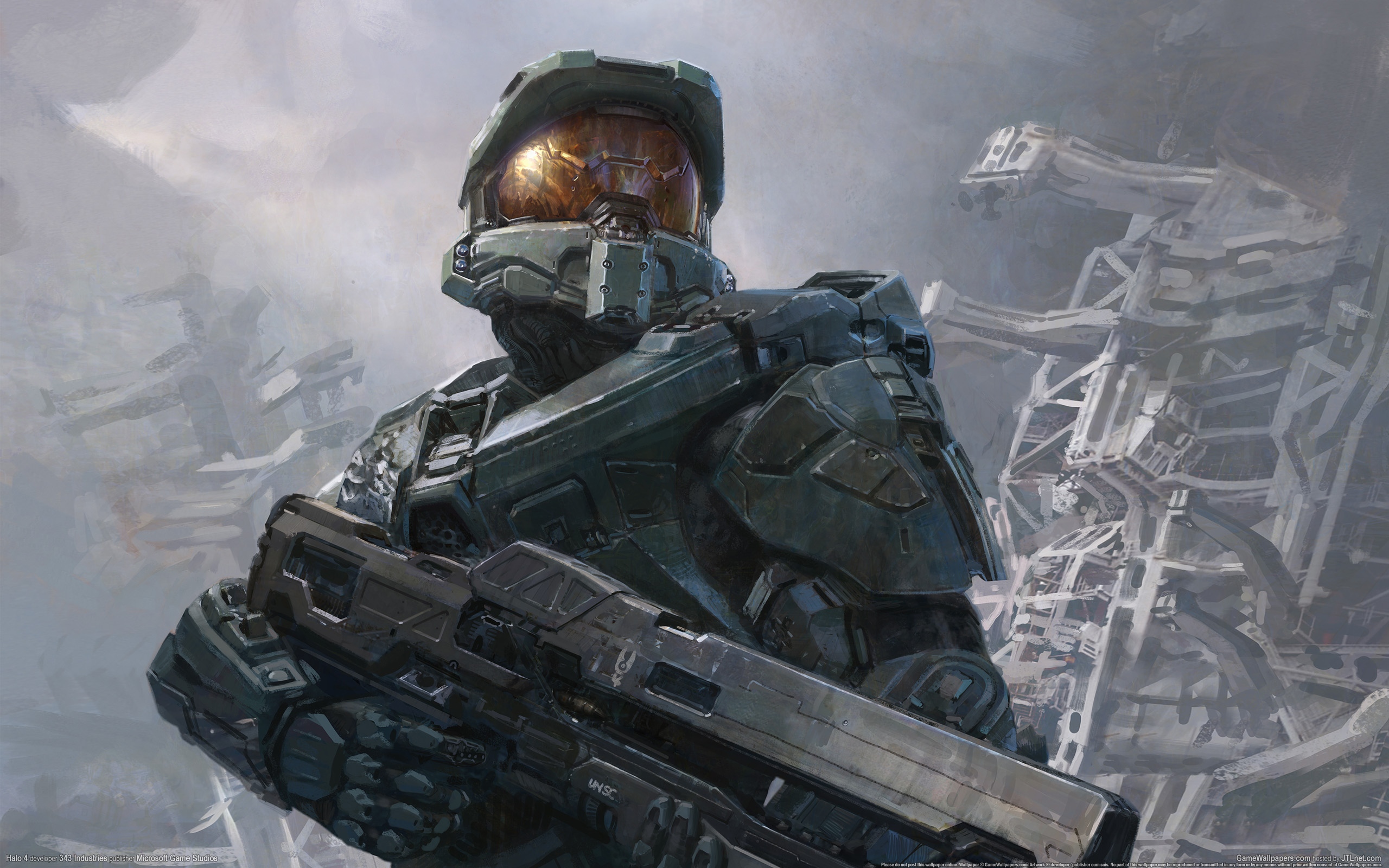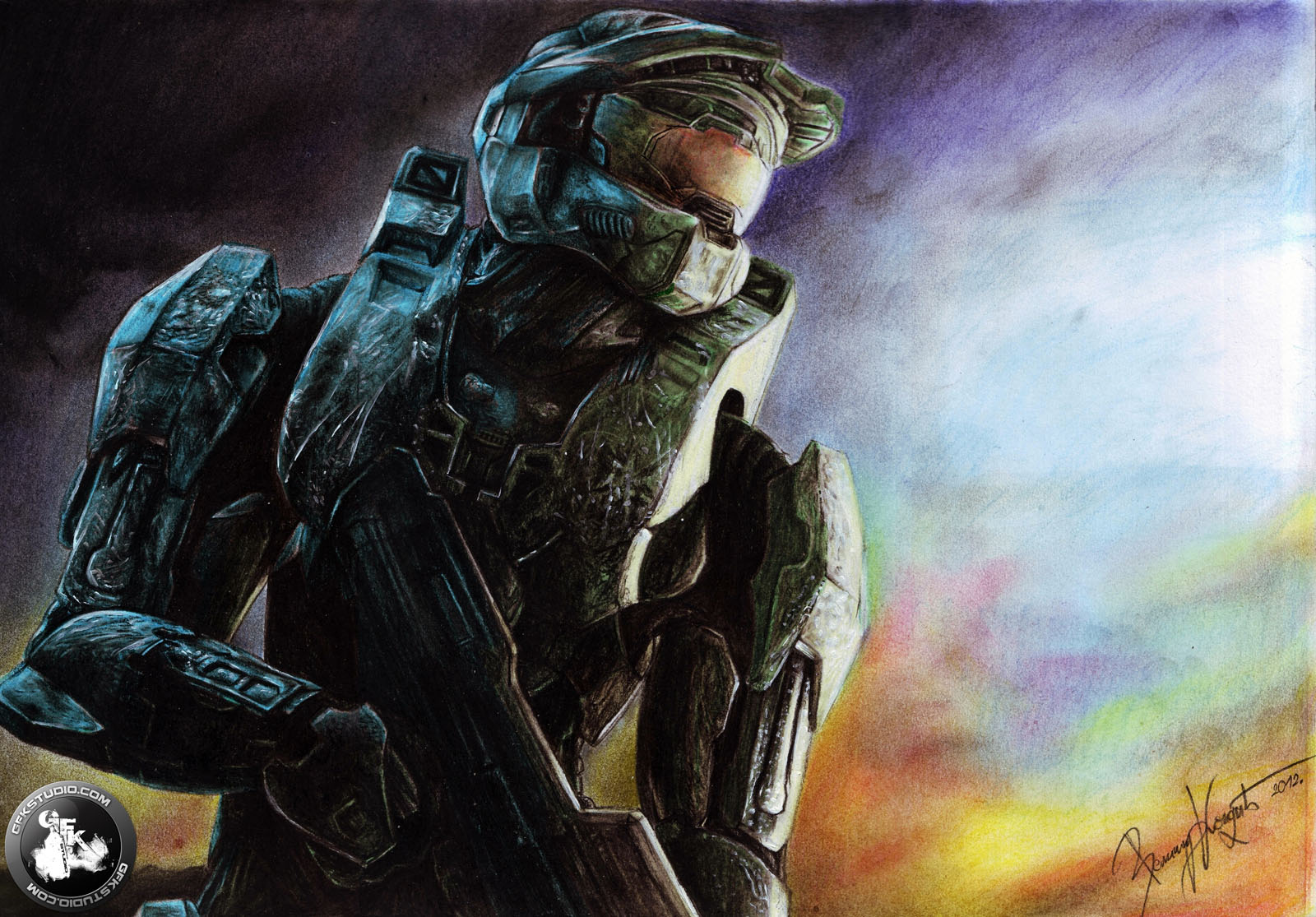
This page has four types of Watchers that never made it into the game, and maybe eight types of Crawlers that we just brainstormed and didn't make it. If I take on page at random, it's a page for the Watchers and the Crawlers. Garza says, "The book shows a lot of the work we did, a lot of iterations. The artists create a lot of the early work in a project like Halo 4, but in the last year, the game's artists spent the last year on polishing, as well as marketing assets, including Awakening: The Art of Halo 4. The lines on the back of the Knight, the three lines, indicate something military, a warrior. Maybe the teeth on the face communicates a little more terror. Having those ideas, I'd be thinking all the time about lines, forms, colors, shapes. They need to be completely alien, out of this world. What is the story when the player first sees these characters? They needed to be ancient, for example. He adds, "It comes down to what we want to communicate. It might look good, but if it's not what they're looking for it doesn't happen." There were several times that we started from scratch on those guys. We'd do pages and pages, go to meetings, and they'd say, 'This resonates with me here, number four, or number five.' I'd take those and do more iterations. The few things we had, we took them to the next level when we were doing those characters. He adds, "What we ended up doing was getting all the reference we could from past games for things like architecture, the colors, the light. For the new characters, we didn't have anything." We had all these other games that we could use to start from. For the Chief, we had the past to work with. "That, for me, was the toughest thing I did, designing all the new enemies. That honor goes to the alien enemy race, the Prometheans. Everyone at 343 is deeply involved in the universe and ideas are bountiful.īut Garza says that the intense detail that went into Master Chief was not the most difficult part of the project. The animators and modelers have cooked up something, and that requires changes.

The writers have a new idea, but it requires some changes. Work-flow is interspersed with input from other departments. "The question I kept asking was, 'What could I add to it that adds more of a story to the Chief?' The little part of it at the back of his head where the Cortana chip goes, how am I going to do that?' It is about designing the character, but it's also about storytelling." When I started redesigning the Chief's helmet, if I began on the front I'd be worrying about how the back might look. "When I'm at home or when I'm driving, I'm thinking about it. Garza has spent four years working on this project, and so he's pored over every inch of the Chief's design and spent hour upon hour figuring out the new look. The team whittled away at rejected options and then focused on the favorites, adding and taking away minute details. Multiple sketches are submitted of every body-part from multiple angles, in conjunction with surrounding parts and as a section of the whole. Things like 'tank', 'heavy,' 'tough.' When you think 'tank,' there are certain colors, certain types of materials, reflectivity." "We had a couple of buzzwords when we were designing the Master Chief. Game artist Gabriel Garza, aka "Robogabo," told us about the challenges of taking a major video game franchise and bringing it up to date. The end result is a Master Chief who looks pretty fabulous, somehow tighter, meaner and more imposing at the same time. The character's complete physicality needed to be stressed in the new design, along with the effects of years in cryogenic limbo.

"A Spartan tossing his chest plate should feel like an anvil dropping," he said.

When 343 Industries unveiled the new-look Master Chief this year, art director Kenneth Scott talked about how the character's look needed to convey an imposing mass and weight:


 0 kommentar(er)
0 kommentar(er)
